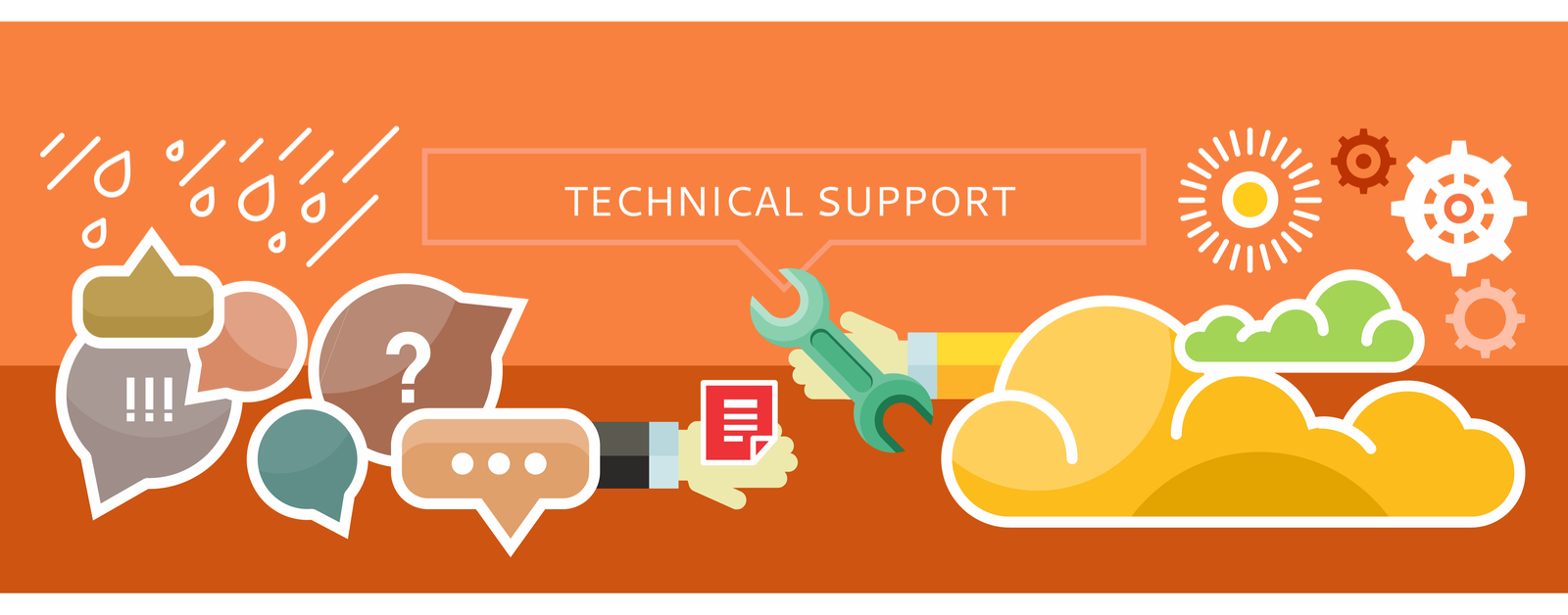Cloud Support – Whom are you going to call?
As you move your systems and resources to the Cloud, your internal IT support model will also evolve. Most of the support work which used to be done by your support personnel such as accessing the infrastructure, servers, and applications in the on-premise data centers will now be performed by The Cloud provider’s support and operational staff in their data centers. This is because as you setup servers, virtual machine and applications to the Cloud on the provider’s infrastructure it becomes their responsibility to manage and maintain these servers and associated resources.
Technical support is an important aspect of Cloud services and is also considered a key differentiator for various Cloud providers when competing against each other to woo customers. While support may not be a key factor in deciding the Cloud provider you chose as small company, that is not the case with large companies looking for Cloud providers. Enterprises will as a normal practice sign up for premium support contracts with their Cloud providers to make sure that they can get highest quality of support when their Cloud servers or cloud connected resources start misbehaving. Large companies want to make sure that when there is an issue with their mission critical Cloud resources, the Cloud provider can offer them the best possible support to remedy the situation as quickly as possible.
Cloud providers have also setup a support model that only caters to the designated people from a company which has signed up for cloud services from them. Not everyone from a company can ask for support from the provider. Large enterprises are still retaining their internal Help Desk staff which are acting as tier 1 support for all internal users. Only if they can’t resolve the issues for their users, then certain key personnel are entitled to open a support ticket with the Cloud provider. This allows for Cloud providers to scale their Support operations efficiently rather than building an army of support personnel on their end to deliver support to all users calling from all the customer companies.
Cloud Support Channels
There are different types of Support channels which are offered by different providers to try to cater to different customer personas. While most customers prefer using the phone to get support, it is not the only channel anymore for getting help from the Cloud providers. The most common channels of support include Service dashboards, Phone, Web tickets, Documentation, Community forums and Social Media.
Service and Status Dashboards
Every Cloud provider has a Service health dashboard and/or a Message dashboard which they use to communicate the health, updates and changes to the service. This should be the first place you should visit if you are thinking there is an issue with your service or if you are experiencing a possible degradation of your cloud services. The great thing about these dashboards is that they are tenant-based and are customized to your account in the provider’s network. Most of the providers also offer an API for you to build your own customized dashboards if required. The providers use this dashboard not only to provide an update on the service health but also use it to communicate with you on service outages, maintenance, and updates.
Phone
One of the most common and the oldest form of getting assistance has been and still continues to be via a phone call into Support. This is where you actually connect to a support engineer/agent who tries to understand and resolve your issue. Most of the time these support engineers are Tier 1 support personnel and only have limited knowledge of the service and the most common issues associated with the Cloud services. They however, do have the ability to escalate the issue to a higher tier Support engineer with more in-depth knowledge about the Cloud services. Depending on the Support plan you have picked, you may or may not have this support channel available to you. We will discuss the different levels of support offerings available from different providers in the next section.
Web Tickets
Cloud providers also have the ability built into their Cloud management portals and consoles so that you are able to open a support ticket for an issue. Depending on the Support plan you have picked, you may or may not have this channel available for your Cloud provider. The web ticket option maybe integrated with a Chatbot feature from your provider. The bot may try to offer some help via some content links to resolve your issue. If the bot can’t help you then they may let you open a support ticket. Typically the support staff from the provider call you back within a certain SLA time depending on the severity of the issue you are experiencing. If you don’t have the option to open a Web ticket through the portal then you may want to consider the next three free channels offered by the providers.
Documentation
Every cloud provider will have its own documentation that they will offer to help you if you would rather read or view a video to find answers to your questions. Documentation is primarily offered as textual content but will also be sprinkled around with video content. This documentation is helpful whether you have a question around how to do something or you are trying to fix an issue with some aspect of your Cloud service. For me this is typically the first place I go to find an answer for a particular question I have around the cloud services since these are authoritative references coming directly from the Cloud provider. Of course the documentation is free to use for everyone. One word of caution here, just with anything you see and read on the Internet, sometimes, documentation may be outdated. The reason for this is that the Cloud providers are evolving their service everyday with new features and functionality and sometimes the content teams cannot keep up the pace with changes in the service. Azure, AWS and Google Cloud all offer their documentation to their customers to help them out with setting up, configuring, maintaining, troubleshooting and fixing their services.
Community forums
Getting help from an online community is a popular option for those who want free support from other people who are also using similar Cloud services. There are various public online communities managed and maintained by the Cloud providers along with other third-party communities which have no Cloud provider affiliation at all. Amazon has their AWS forums whereas Microsoft offers forums support via their MSDN Azure forums. Most popular third-party forum communities include Stackoverflow and Serverfault. Stackoverflow is for developers whereas Serverfault is used by systems and network administrators. Community forums are very popular with individual developers, small ISV, enthusiasts and moonlighters who don’t want to spend the money to sign up for premium support plans from the Cloud providers but rather get free support and also provider help to other like-minded people in the forum communities.
Social Media
Most of the Cloud providers offer support via different social media channels primarily Twitter, Facebook and LinkedIn. Twitter by far is the most popular and often used by the Cloud customers. Twitter is one of those channels where you will hear from users almost instantaneously if there is an issue with the service or if there a Cloud service outage going on. Twitter users will immediately tweet out if they have any question on the cloud services, if the services are not working as expected or if there is a service outage that is going on with the Cloud provider. All Cloud providers which offer Twitter support have dedicated handles which they monitor and you can use those to ask a question or to get their attention. If you are using Azure Cloud services, you can utilize the @Azure and @AzureSupport handles directly to ask a question or to report any issues. Similarly for Amazon Web Services, you have access to @AWSCloud and @AWSSupport handles. Google on the other hand offers @GoogleCloud and @GCPCloud handles for its customers for support. To me using Twitter and posting to the Cloud provider’s twitter handle is the fastest way to get the provider’s attention and to get a response back. Again, just like the community forums, this is a free channel and widely used by non-enterprise users to get help from the providers.
Cloud Support Levels
As I discussed in the previous section, not all the support channels are available to you as a customer when you sign up with a particular provider and this also varies from one provider to the other. While Microsoft offers free support for Office 365 SaaS cloud services that is not the case for Microsoft’s Azure cloud services. There are different types of support plans available for you from Microsoft to sign up for depending on how critical are the systems you are hosting with them. Similarly AWS and Google Cloud offer their own Support plans you can choose from depending on the criticality of your cloud systems and budget.
Join our Mailing List
Subscribe to our mailing list and get additional information around Cloud, Cloud Computing, Leadership, Digital Transformation, Social Media and Content Marketing.
Thank you for subscribing.
Something went wrong.
Leave a Reply
Leave a Reply
Join our Mailing List
Subscribe to our mailing list and get additional information on Digital Transformation, Cloud, AI, ML, IoT, Emerging Technologies, Education, Training and other related topics
Thank you for subscribing.
Something went wrong.











About the author